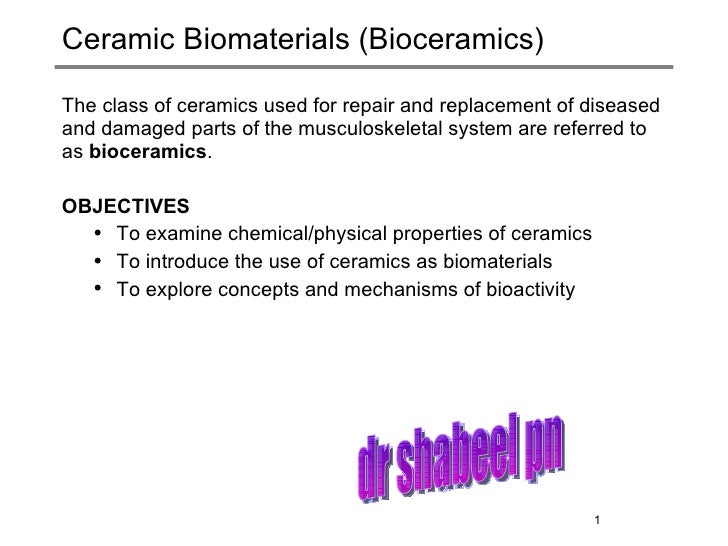Ceramic biomaterials bioceramics the class of ceramics used for repair and replacement of diseased and damaged parts of the musculoskeletal system are referr slideshare uses cookies to improve functionality and performance and to provide you with relevant advertising.
Ceramics biomaterials definition.
These biomaterials are grouped into bioinert ceramics as alumina and zirconia bioactive glasses and glass ceramics and bioresorbable calcium phosphates based materials.
Bioactive glasses are considered biocompatible but there still is much unknown about how these glasses interact with the immune system.
It is quite useful reviewing how and why ceramics came to be used in dentistry.
The bioceramics concepts namely physicochemical mechanical and biological properties and respective applications in diverse fields of tissue engineering are discussed in.
Bioceramics range in biocompatibility from the ceramic oxides which are inert in the body to the other extreme of resorbable materials which are eventually replaced by the body after they have assisted repair bioceramics are used in many types of medical procedures.
Biomaterials can be derived either from nature or synthesized in the laboratory using a variety of chemical approaches utilizing metallic components polymers ceramics or composite materials they are often used and or adapted for a medical application and thus comprises whole or part of a living structure or biomedical device which performs augments or replaces a natural.
1 to alert practitioners to the fact that the use of ceramics since the very beginning always represented the adoption of high technology versus craft art.
This account serves three purposes.
The ceramic particulate reinforcement has led to the choice of more materials for implant applications that include ceramic ceramic ceramic polymer and ceramic metal composites.
Ceramics used as biomaterials to fill defects in tooth and bone to fix bone grafts fractures or prostheses to bone and to replace diseased tissue are called bioceramics.
Ceramic is defined as synthesized inorganic solid crystalline materials excluding metals.
2 to reinforce the concept that ceramics and.
Glass ceramics elicit osteoinductiveproperties while calcium phosphate ceramics also exhibit non toxicity to tissues and bioresorption.
Such materials include metal alloys ceramics polymers and biocomposites and when used for biomedical purposes they are called biomaterials biomaterials are defined by their function.
Bioceramics are an important subset of biomaterials.
With the application of regenerative medicine lost and damaged tissues can be replaced or enhanced with materials of both organic and inorganic origin.
Ceramics in dentistry where did this stuff come from.
Examples of biomaterials include metals ceramics glass and polymers.










